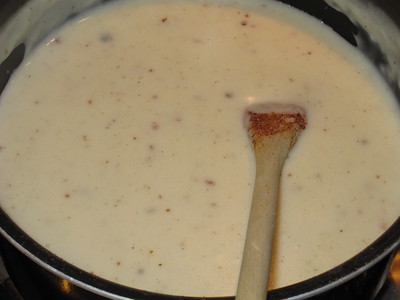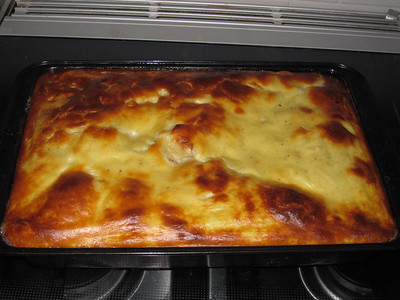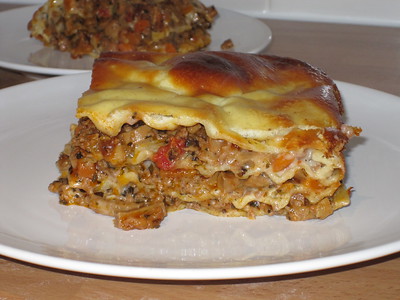The other day we were invited to my parents-in-law and I decided to make a batch as a present. They went down quite well. I mixed up the dough in the morning, folded and rested and took over to their place, where I shaped and baked it. Freshly baked brioche with strawberry jam and clotted cream, definitely a hit. And don't think about the fat, it's practically 100%, no point in worrying... And it was a very good dough, kept trying to escape the bowl, I had to do an extra emergency fold just before I left home. It survived the 2 h trip quite happily.
And when I asked Lundulph if he'd like me to make some more for us, he said yes. So I did. Last night I mixed it up and folded and left to rest overnight. This time the kitchen was a bit colder, so the dough didn't rise as much, but well enough. I've also made a slight change to Richard Bertinet's recipe, since I've stopped buying large eggs. Lundulph read somewhere that laying large and extra large eggs is a bit painful for hens, so I've stopped buying them. I buy only medium sized ones. See, I've seen an egg being laid, it doesn't look easy, so I think what Lundulph read is correct. Thus I use 6 medium eggs instead of the 350 g eggs which should be equal to 6 large eggs. In fact I don't bother weighing the eggs. And I do the first knead in my beloved Kitchen Assistent machine. I let it run on medium, but keep an eye on it and vary the speed, if it looks like it's not being worked. When it goes stringy, I give it another couple of minutes, then turn the dough onto the work surface and work it for a bit before adding the butter. I still used 250 g butter, which is "the rich man's" amount. The recipe is here.
The other reason for making the brioches is that finally Amazon are selling proper brioche moulds. I've been looking for these for ages and had recently given up asking in every kitchen shop I'd pass. All I'd get is a vacant look as if I'd spoken Latin to them.
So, this morning I woke up really early to make the brioches. Lundulph was supposed to sleep on, but the sun had gone up and he went to look at the morning rush at the bird feeder, while I was baking. The goldfinches have been back for two weeks now, after a couple of months' absence. Very exciting.
Sadly my oven decided to play up today. Gas mark 5 which should be 190 degrees C was in fact 210 degrees and the brioches coloured up too fast. I turned it down to gas mark 4, no change. After 15 minutes, I wasn't sure if they were done, so I gave them another 15 minutes and on gas mark 3. At least it went down to 190 degrees C then. But they were frighteningly pale underneath.
The problem with not having a fan assisted oven and baking with silicone moulds - heat just doesn't reach where it's needed. One thing that turned out a very nice and unexpected surprise is that the dough of 500 g flour makes exactly 18 brioches of 60 g each. Well, there's about 30 g left over, which I divide between the pieces of dough. So I need to buy one more of these moulds. In the mean time, I have to bake the last 6 in another dish.
Slightly better looking at the bottom, but not much. That oven is going as soon as possible. Grrr!




